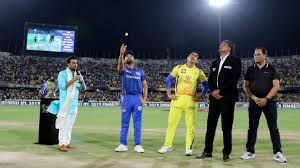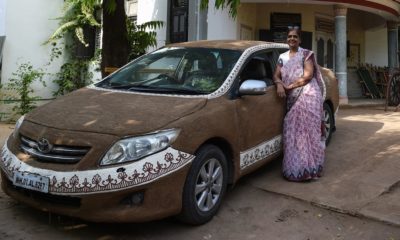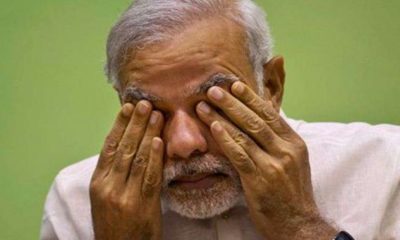Feature
11 get life imprisonment for Gulberg massacre
 Ahmedabad: Fourteen years after a mob massacred 69 people at the Gulberg Society here, a court on Friday sentenced 11 of the 24 convicts to life imprisonment.
Ahmedabad: Fourteen years after a mob massacred 69 people at the Gulberg Society here, a court on Friday sentenced 11 of the 24 convicts to life imprisonment.
A Special Sessions Court also sentenced one person to 10 years and 12 others to seven years in jail.
Calling the day of the killings “the darkest day in the history of civil society”, Special SIT Court Judge P.B. Desai handed down life imprisonment to the 11 persons on charge of murder.
The one sentenced to 10 years was charged with attempt to murder.
Twelve others, including Vishwa Hindu Parishad (VHP) leader Atul Vaidya, who were found guilty of crimes like rioting and arson, were awarded seven years in prison.
Significantly, the court had thrown out charges of conspiracy in the gruesome killings and refused to treat the case as “rarest of the rare” as asked by the prosecution and the counsel for the victims.
As many as 69 people, including former Congress MP Ehsan Jafri, were killed on February 28, 2002 when an armed mob some 20,000-25,000 strong attacked the Gulbarg Society inhabited by Muslims.
It was one of the most horrific outbursts of violence during the 2002 Gujarat riots which were sparked off by a train burning at Godhra that led to the death of 59 Hindus, mostly VHP supporters.
On June 2, the court convicted all 24 of the 60 accused while finding 36 not guilty.
The court held further hearings for three separate sessions before handing down the sentences on Friday.
Those sentenced to life imprisonment are Kailash Lalchand Dhobi, Yogendrasinh alias Lalusingh Shekhawat, Jayesh Kumar alias Gabbar Jigar, Krishna Kumar alias Krishna Munnalal, Jayesh Ramji Parmar, Raju alias Mamo Kaniyo, Naran Sitaram Tank, Lakhan Singh alia Lakhiyo, Bharat alias Bharat Teli Shital Prasad, Bharat Laxmansingh Rajput of VHP and Dinesh Prabhudas Sharma.
Mangilal Dhoopchand Jain was sentenced to 10 years.
The 12 sentenced for seven years are Surendra alias Vakil Digvijaysinh Chouhan, Dilip alias Kalu Chaturbhai Parmar, Sandeep alias Sonu Ram Prakash Mehra, Mukesh Pukhraj Sankhla, Ambesh Kantilal Jigar, Prakash alias Kali Khengarji Padhiyar, Manish Prabhulal Jain, Dharmesh Prahladbhai Shukla, Kapil Devnarayan alias Munnabhai Mishra, Suresh alias Kali Dahyabhai Dhobi, Atul Indravadan Vaidya of VHP and Babubhai Hastimal Marwadi.
Entertainment
Meghalaya Reserves Legalized Gambling and Sports Betting for Tourists

The State Scores Extra High on Gaming-Friendly Industry Index
Meghalaya scored 92.85 out of 100 possible points in a Gaming Industry Index and proved to be India’s most gaming-friendly state following its recent profound legislation changes over the field allowing land-based and online gaming, including games of chance, under a licensing regime.
The index by the UK India Business Council (UKIBC) uses a scale of 0 to 100 to measure the level of legalisation on gambling and betting achieved by a state based on the scores over a set of seven different games – lottery, horse racing, betting on sports, poker, rummy, casino and fantasy sports
Starting from February last year, Meghalaya became the third state in India’s northeast to legalise gambling and betting after Sikkim and Nagaland. After consultations with the UKIBC, the state proceeded with the adoption of the Meghalaya Regulation of Gaming Act, 2021 and the nullification of the Meghalaya Prevention of Gambling Act, 1970. Subsequently in December, the Meghalaya Regulation of Gaming Rules, 2021 were notified and came into force.
All for the Tourists
The move to legalise and license various forms of offline and online betting and gambling in Meghalaya is aimed at boosting tourism and creating jobs, and altogether raising taxation revenues for the northeastern state. At the same time, the opportunities to bet and gamble legally will be reserved only for tourists and visitors.
“We came out with a Gaming Act and subsequently framed the Regulation of Gaming Rules, 2021. The government will accordingly issue licenses to operate games of skill and chance, both online and offline,” said James P. K. Sangma, Meghalaya State Law and Taxation Minister speaking in the capital city of Shillong. “But the legalized gambling and gaming will only be for tourists and not residents of Meghalaya,” he continued.
To be allowed to play, tourists and people visiting the state for work or business purposes will have to prove their non-resident status by presenting appropriate documents, in a process similar to a bank KYC (Know Your Customer) procedure.
Meghalaya Reaches Out to a Vast Market
With 140 millions of people in India estimated to bet regularly on sports, and a total of 370 million desi bettors around prominent sporting events, as per data from one of the latest reports by Esse N Videri, Meghalaya is set to reach out and take a piece of a vast market.
Estimates on the financial value of India’s sports betting market, combined across all types of offline channels and online sports and cricket predictions and betting platforms, speak about amounts between $130 and $150 billion (roughly between ₹9.7 and ₹11.5 lakh crore).
Andhra Pradesh, Telangana and Delhi are shown to deliver the highest number of bettors and Meghalaya can count on substantial tourists flow from their betting circles. The sports betting communities of Karnataka, Maharashtra, Uttar Pradesh and Haryana are also not to be underestimated.
Among the sports, cricket is most popular, registering 68 percent of the total bet count analyzed by Esse N Videri. Football takes second position with 11 percent of the bets, followed by betting on FIFA at 7 percent and on eCricket at 5 percent. The last position in the Top 5 of popular sports for betting in India is taken by tennis with 3 percent of the bet count.
Local Citizens will Still have Their Teer Betting
Meghalaya residents will still be permitted to participate in teer betting over arrow-shooting results. Teer is a traditional method of gambling, somewhat similar to a lottery draw, and held under the rules of the Meghalaya Regulation of the Game of Arrow Shooting and the Sale of Teer Tickets Act, 2018.
Teer includes bettors wagering on the number of arrows that reach the target which is placed about 50 meters away from a team of 20 archers positioned in a semicircle.
The archers shoot volleys of arrows at the target for ten minutes, and players place their bets choosing a number between 0 and 99 trying to guess the last two digits of the number of arrows that successfully pierce the target.
If, for example, the number of hits is 256, anyone who has bet on 56 wins an amount eight times bigger than their wager.























